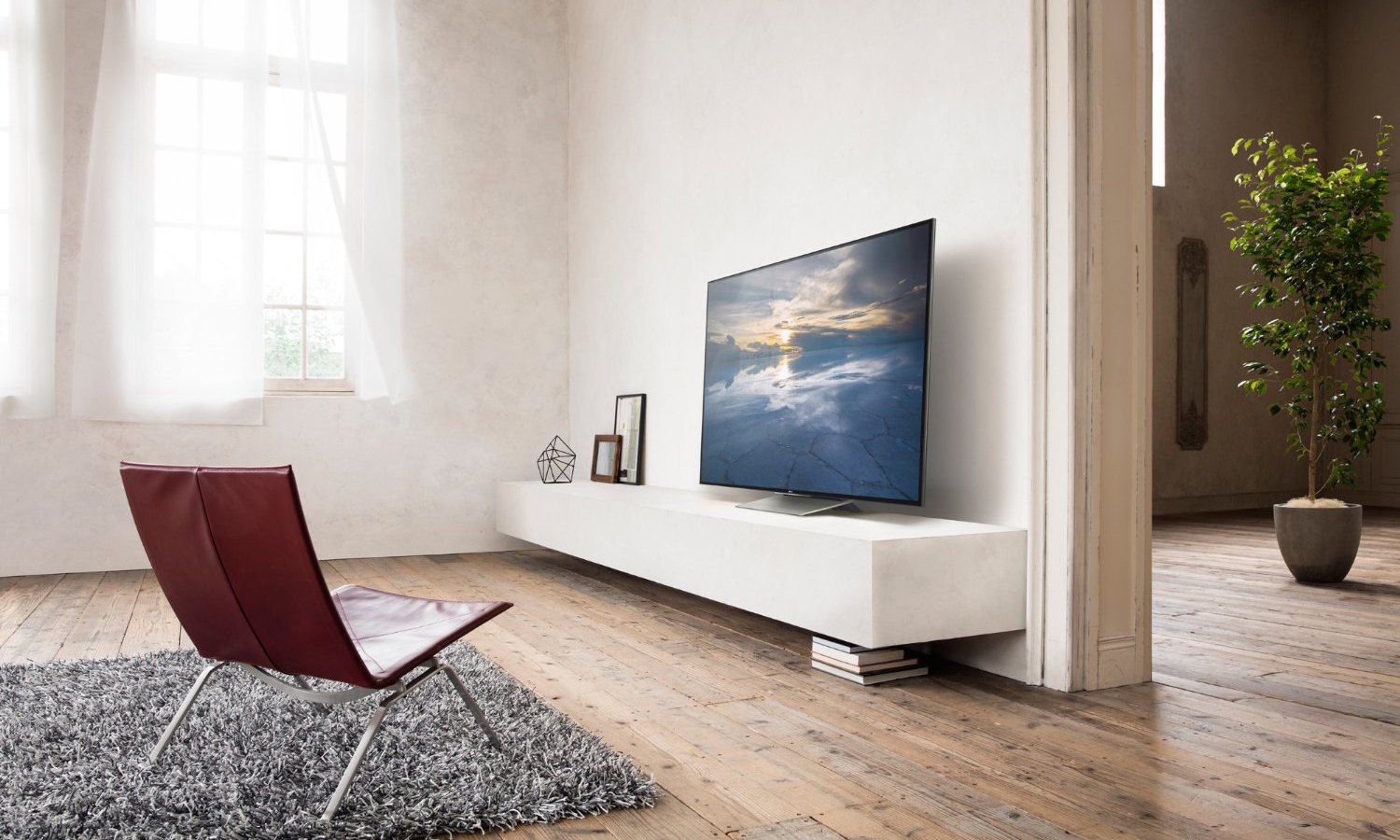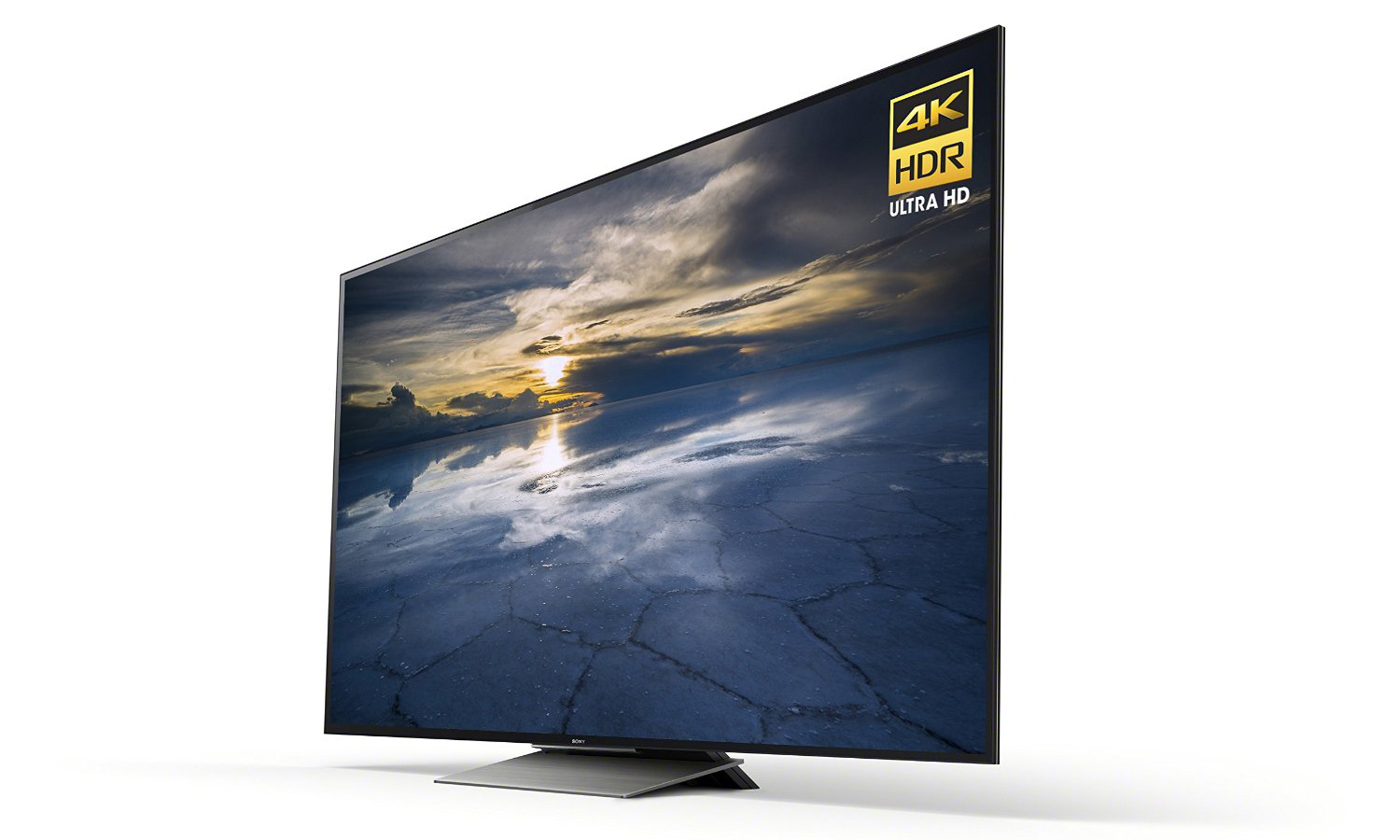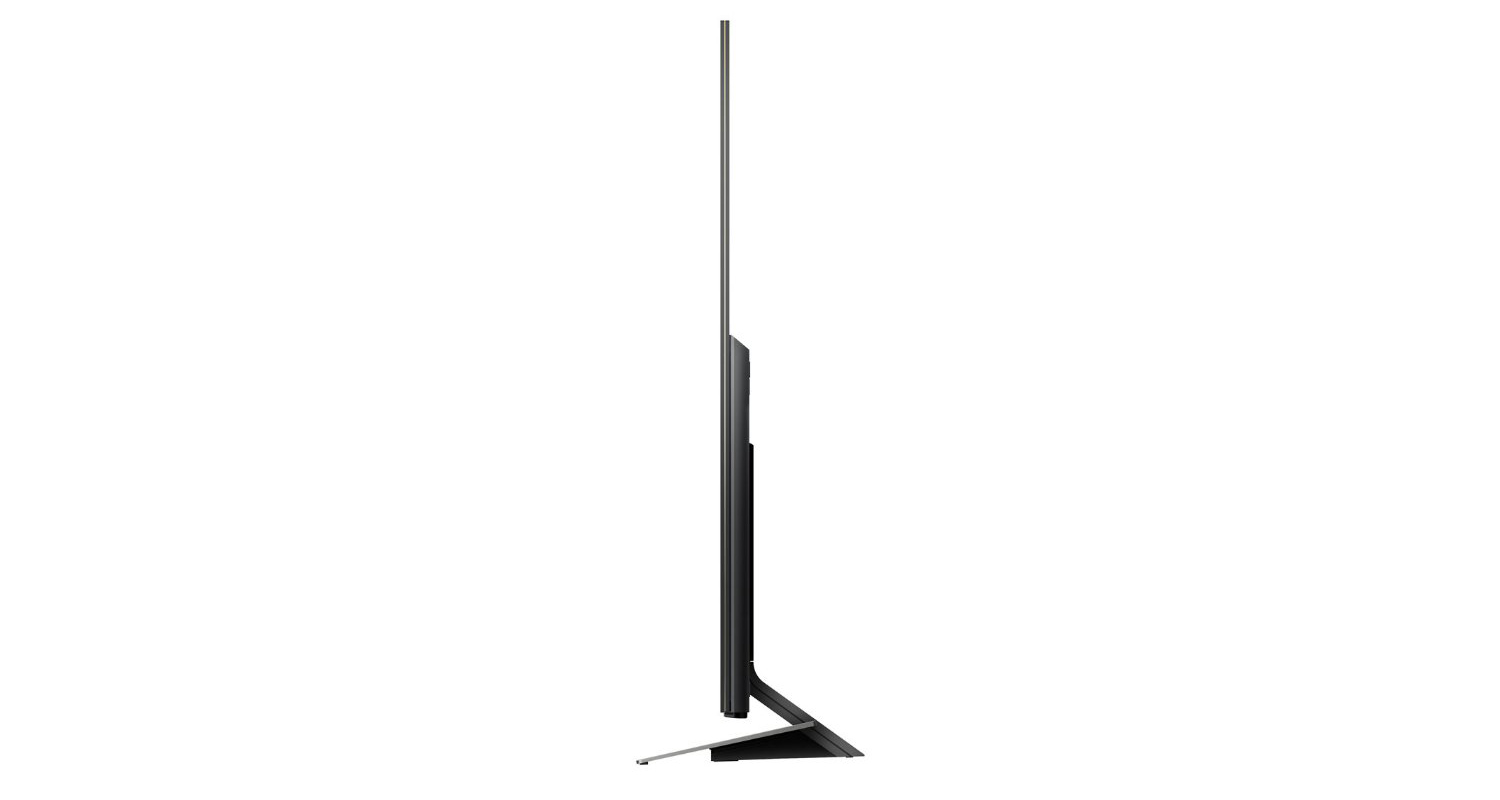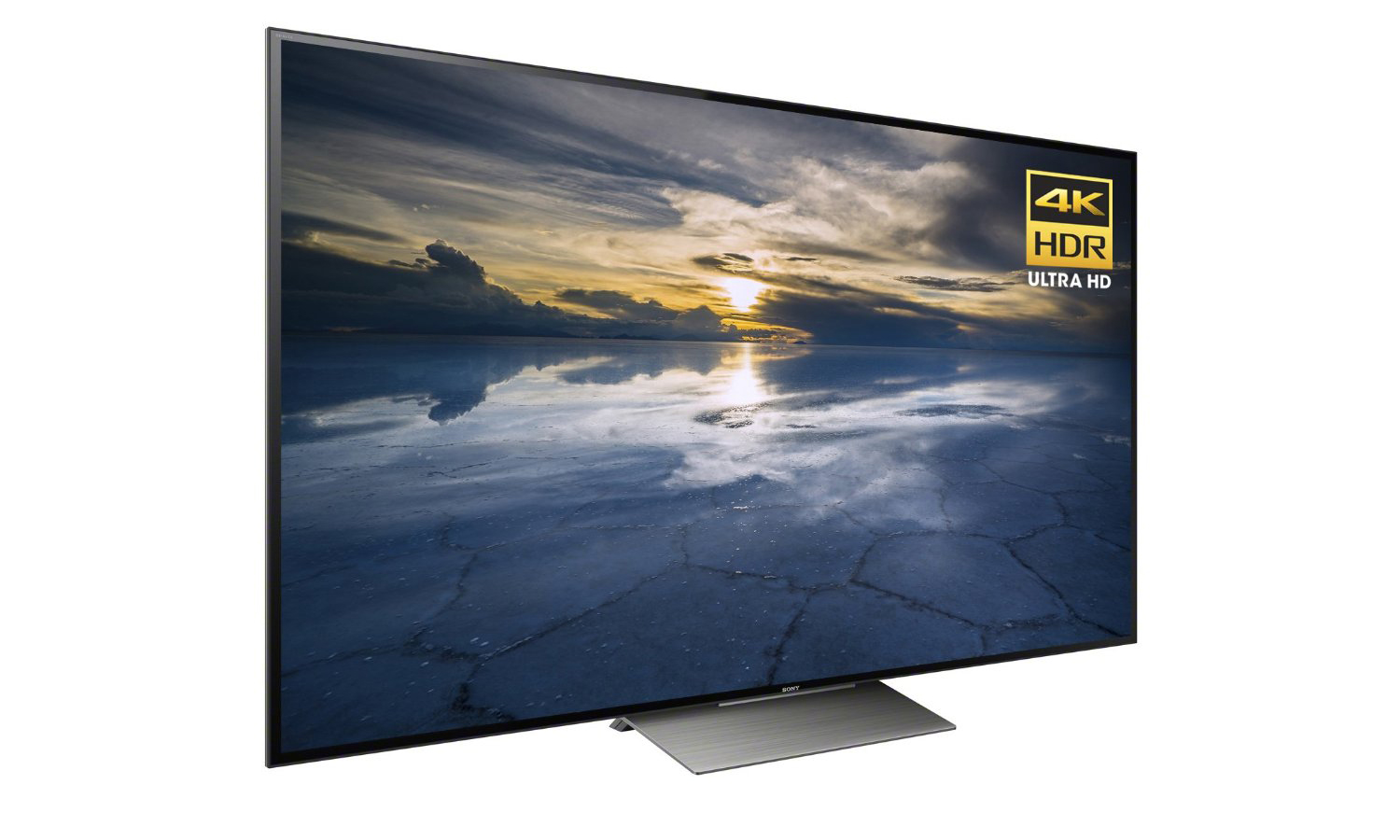Tom's Guide Verdict
Making a strong case for 4K HDR TVs, the 55-inch Sony X930D delivers an excellent picture, but its remote control could be better.
Pros
- +
Accurate colors
- +
Solid array of smart-TV features
- +
Good HDR performance
Cons
- -
Lack of inky blacks compared to OLED
- -
Annoying remote control
Why you can trust Tom's Guide
On the leading edge of a new wave of 4K TVs boasting HDR capabilities, Sony's 55-inch Bravia X930D demonstrates the startling possibilities of the new video format — as well as the potential for confusion among shoppers.

HDR stands for high dynamic range, the ability of a TV to display more colors, better contrast ratios and higher brightness levels compared to standard HD and 4K ultra HD sets. The Sony Bravia X930D uses quantum dot technology to produce what the company claims is a 30 percent wider color gamut. So the TV commands a premium price, around $2,000, for supporting the new format. However, with a paucity of HDR content currently available, you may want to wait before buying this or any HDR set.
What Is HDR?
To take full advantage of the HDR abilities in the Sony Bravia X930D, you need HDR video content, of which there is very little at the moment. It's available from only a handful of services, such as Vudu, Amazon Video and Sony's own Ultra streaming service.

More confusing for buyers, Sony is not using either of the HDR labels — Ultra HD Premium or Dolby Vision — that are appearing on other sets to designate support for the new, wider-color format. Sony's sets are branded with the company's own "4K HDR" logo. A Sony spokesperson pointed out that it means the TV is compatible with HDR discs and all streaming services offering HDR content (also referred to as HDR 10).
The Achilles' heel of the Sony Bravia X930D is its remote control.
While the Bravia set will not play Dolby Vision material (a proprietary version of HDR), the set will be compatible with Dolby Vision discs, because those discs will also contain a standard HDR version, according to Sony. (For more on HDR, read our primer here: http://www.tomsguide.com/us/hdr-tv-explained,news-22227.html)
MORE: Best 4K TVs - Ultra High Definition (UHD) Televisions
Design: Solid-straight
The Bravia X930D uses an edge-lit LED design, which keeps the set slim, save for the bottom portion in back that contains the solid-state electronics and video processing. The whole package is still under an inch and a half thick, and it rests on a very steady center-pedestal, wedge-style stand for easy tabletop placement. However, you'll have to hide the set's massive external power brick (something more common on laptops rather than TVs) somewhere under the table.
Get instant access to breaking news, the hottest reviews, great deals and helpful tips.

Connections for the X930D include Ethernet, four HDMI ports, three USB ports and hookups for RF/cable, composite video, component video and digital audio output. It has built-in Wi-Fi and supports Wi-Fi Direct.
Performance: Intense colors
There is no question the Sony Bravia X930D presents a strikingly improved HDR picture when presented with original HDR content. The 4K HDR version of The Amazing Spider-Man 2 was charged with brilliant, intense colors, with shockingly blue Electro truly lighting up the screen. While bright, the HDR video did not lose any detail in reproducing a notably more luminous picture.

Confirming the set's HDR benefits, a test music video we use to examine extended color displays looked outstanding. It revealed more of the audience in the shadows, including subtle skin tones and facial expressions that were hidden in the darkness on other sets. Reds looked deep and rich, without blowing out details like the folds in a crepe dress.
On the downside, in stretching the contrast range and boosting brightness levels, the X930D sacrifices some degree of blackness, so that letterbox bars, for example, look more gray than black. And, as with even the best LCDs, there's a loss of color saturation — though not excessive — when you move out of the optimal center viewing area. Actors' faces will lose some of the HDR detail and will appear pastier.
The Sony X930D has a welter of preset video modes, including Vivid, Standard, Cinema Pro, Cinema Home and several photo modes. There are also Sports, Animation, Game and HDR Video modes. The X930D should automatically recognize HDR content and switch color mapping and brightness settings accordingly. However, some raw HDR video may lack the metadata signals to tell the set to switch modes, in which case you can choose the HDR video setting. (Leaving the set in HDR video mode, however, when watching standard HD fare will produce some strange results, with blown-out oranges and reds.)

The majority of material available is still in HD, and the X930D does well upscaling the resolution to 4K levels. In Cinema Home mode, the set will also try to improve color saturation by using some of its extended-color HDR skills. It did not distort the flame-throwing guitar in Mad Max: Fury Road, for example, although it could not quite match the fiery realism of an OLED set, such as the LG Signature G6.
The Bravia set also handled challenging scenes in Blu-ray versions of Gravity and The Martian. Stars shone brightly in the sky, without streaking, and while there were some halo and flaring effects around bright objects on dark backgrounds, they were minimal, especially considering this is an edge-lit set.
MORE: Best TV - Top-Rated Televisions From 40 to 65 Inches
Audio: Hollow sound
To complement the multiple picture modes, the Sony X930D has plenty of preset sound modes, too. You can choose from Live Football, Standard, Cinema and Music modes. There's also a ClearAudio+ setting intended to enhance the immersive experience. Other special features include Voice Zoom to boost mumbling actors and a sound-restoration setting that tries to bring some of the high frequencies back to compressed streaming videos.
The 4K HDR version of The Amazing Spider-Man 2 was charged with brilliant, intense colors, with shockingly blue Electro truly lighting up the screen.
All of the audio settings produce distinctive effects, and which one you prefer is largely a matter of personal taste. However, no matter which setting is selected, there's an inescapable hollowness to the sound. So, as with most flat panels, a soundbar would be a welcome enhancement.
Interface: Irritating remote
Sony uses Google's Android TV interface to handle smart-TV streaming features and search functions, and to organize items like input and picture settings. It's bright, clear and generally well organized, especially for our smartphone-addicted generation. Some items are still difficult to locate, however, such as media on a USB stick that only showed up under the video menu. In theory, using Android TV means the X930D will stay up to date with continually upgraded apps. However, we did note that the Vudu app in Android TV did not yet support HDR downloads.

The Achilles heel of the Sony Bravia X930D is its remote control. It's a conventional wand-style remote that supports Google's Voice search with a built-in microphone, and it now has a sealed membrane keypad, which should resist spills. But the remote has retained its frustratingly poor layout. There are two concentric circles of buttons around the Select/Enter button. The inner circle comprises the standard four-way directional buttons used to move through menus, but around those buttons is another circle of buttons, including Action Menu, Guide and Discover.

The result: More often than not, you'll hit the Discover button when trying to hit the down menu button. It's a frustrating experience and one that isn't ameliorated with extended use.
Bottom Line
If you're looking for a 4K set capable of handling the bright HDR future, the 55-inch Sony Bravia X930D is certainly a capable performer with accurate colors. For a TV of this caliber, it's also competitively priced, and the inclusion of Android TV to run its apps is a hedge against future obsolescence. Some shoppers will surely hesitate to take the HDR plunge, however, as the nascent format sorts out issues with varying levels of HDR support. Until TV manufacturers coalesce around one HDR brand — Ultra HD Premium, Dolby Vision or some other logo — consumers may be reluctant to pay for the brighter picture.
John R. Quain has been reviewing and testing video and audio equipment for more than 20 years. For Tom's Guide, he has reviewed televisions, HDTV antennas, electric bikes, electric cars, as well as other outdoor equipment. He is currently a contributor to The New York Times and the CBS News television program.

